“A Game of Skill or Chance?: An Interview With James Schidlowsky.” kolaj magazine 35 (2022): 28-33.
James Schidlowsky is a creative polymath whose diverse output includes photography, collage, electronic circuitry, and computer programming. Schidlowsky is also involved in the experimental music scene and has collaborated with a wide range of Montréal artists. In addition to making art, Schidlowsky is also a mushroom and pinball enthusiast, and has a blog that is devoted to identifying pinball machines found in movies.
Despite working in a wide range of mediums, Schidlowsky often employs a strategy familiar to those who play pinball, namely, a delicate blend of skill and chance operations. He is rigorous and meticulous, but his work often allows space for free association and randomness – a space that allows for the novel or unique. He is a tinkerer who uses DIY techniques and technologies to make work that satisfies his own creative impulses, curiosity and obsessions rather than those of the art world. James is not interested in over conceptualizing his work, but rather, his works are attempts to realize his personal aesthetic visions and to satisfy obsessive impulses.
The following interview was conducted over e-mail and collaboratively edited into its present form.
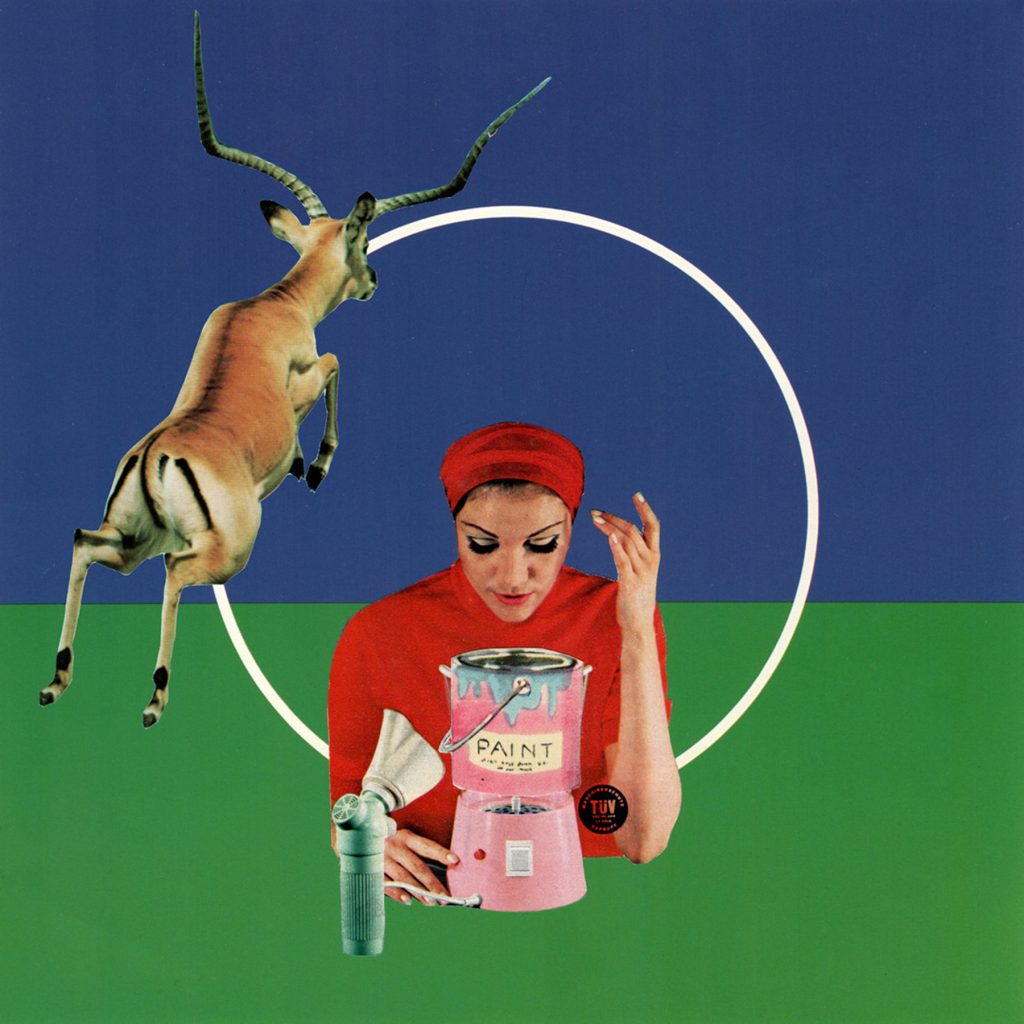
Clint Enns: How did you begin making collage?
James Schidlowsky: One day while hanging out with my friend, multidisciplinary artist Maryse Latulippe, I suggested that we do something creative whilst sitting around talking and listening to music, and we decided to collage. She worked rather quickly, whereas I, even in those early sessions, took it too seriously and would overthink each element. I also find the collage work of Montréal artists Felix Morel and Marie-Douce St-Jacques inspiring, although my style doesn’t resemble theirs.
CE: For both your paper collages and your photography, you try to avoid using digital manipulation. Do you have an aesthetic aversion to digital effects or is it just not part of your preferred workflow?
JS: I don’t have an aversion per se, but I usually just prefer “in-camera” effects to post-manipulation. While producing an image, I concentrate my efforts on good composition. Theoretically, an image should be judged on its own merits and not how it came to be; however, I often find practical effects more interesting than digital ones. It’s a complex and nuanced issue, given that much of what we consume is via digital means, even if it was produced by analogue ways.
I spent many years working as a computer programmer, and making art using the same tools and movements wasn’t very appealing to me. Hands-on was, simply put, more fun. Yet I do find it interesting that computers can be used to generate images, and in fact, my earliest programming efforts did just that. Once I stopped working as a programmer, I rediscovered what I found fascinating about computers and have since worked on a few “creative code art” projects.
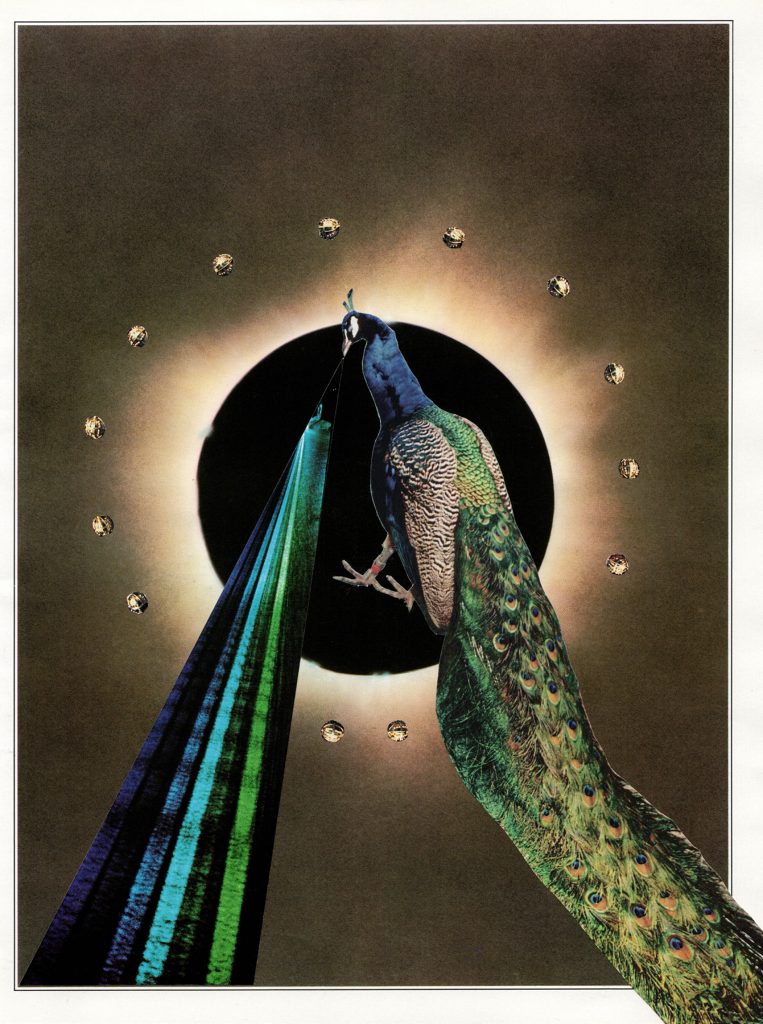
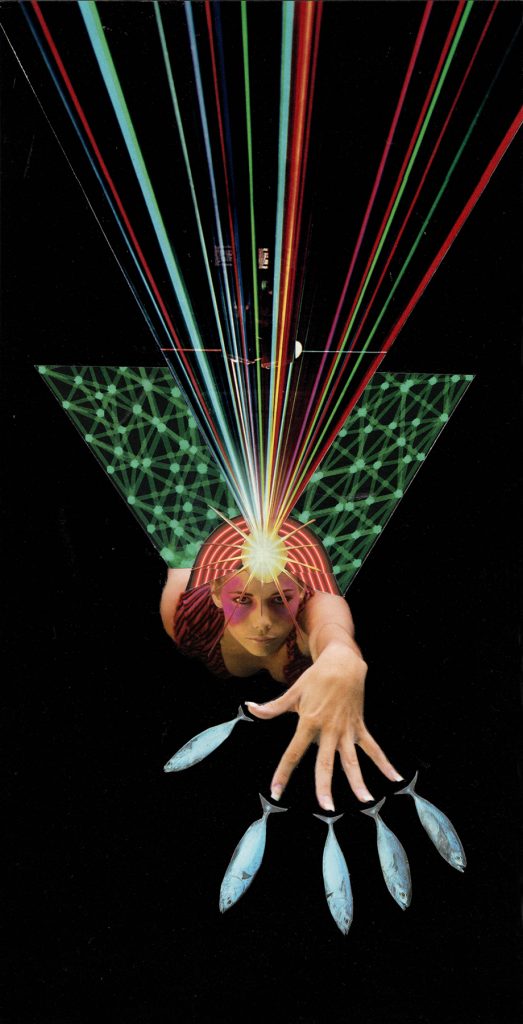
CE: What are some of the Schidlowsky rules for “good” composition?
JS: Frankly, I don’t care to overanalyze what I do, nor do I have the vocabulary to do so. It’s about aesthetics and absurdity, but I realize this doesn’t provide any real insight. I guess I know what I like when I see it.
CE: Do you see art as a way of being in the world?
JS: I create stuff in order to keep busy and to avoid thinking about the horror of existence. One would think that making stuff only for oneself is the purest form of art making, but humans are social animals, so there is always a deep-rooted need to share things. Technology often facilitates this (allowing one to document it and to share it with the rest of the world), but then one can fall into the treacherous trap of needing views/likes/comments, and if they don’t come … disappointment and a loss of confidence in what we’ve produced. It’s a delicate and cruel balance between creating, sharing freely, and dealing with other people’s reactions.

CE: Let’s talk about one of your hits, namely, Pinball Supercut (2017-2019), a video collage which is approximately 14 hours in length and made for North Star Machines à piastres barcade in Montreal.1 The supercut has its own rhythm and flow; however, it also can be seen as attempting the impossible – creating an exhaustive list of all the pinball machines in cinema.
JS: The supercut was started by my friend, filmmaker Mark Loeser, who completed the first two hours. When I decided to continue it, I was only planning to add 15-minute segments every couple of months, but I then caught the bug and ended up producing 22 segments, averaging about 30 minutes each. I added over 12 hours of footage to the original supercut within two years. There was never any attempt to create a definitive list, although I am fairly certain this is (and will remain) the longest pinball supercut in existence.
CE: Do you see the Pinball Supercut existing outside of the North Star or do you feel it is a site-specific work? For instance, I could see this piece as being installed inside an actual pinball machine.
JS: Mark’s original supercut was a gift to the bar, and when I took up the reins, I just continued the idea without any thought about ownership or whatever. In the beginning, it was exclusive to the bar – something special, worth making a pilgrimage for. At this point, I feel it is time for the piece to have a life outside of the bar. Given that it is extremely long, it poses some logistical challenges if it were to exist online for example, never mind the 600 copyright violations!
CE: Was your supercut of the supercut, Pinball All-Scores (2019), a compilation of every scene in the supercut that features full-frame scoring, an attempt to make the original more palatable given it is only six minutes long?
JS: The All-Scores super-supercut was simply an amusing exercise, nothing to do with palatability. It also stands apart since there is sound, whereas the main supercut is silent. It is a mise en abyme given that this super-supercut is part of the supercut, all the while being, in a sense, a reduction or summary of the supercut itself.

CE: Like much of your work, your series Very Eyes, Very Eyes (2019-ongoing) is obsessional. The video is very meticulous while still feeling dreamlike. What was the impetus for the series? What are some of the strategies you are using to connect the material?
JS: After temporarily calling it quits on the pinball supercut, I still had the editing bug. In 2011/12, Maryse made a “collage movie” called Psychfox. There was something in the vibe of her main source (an obscure 1973 sci-fi flick called Idaho Transfer) that I really liked, so I started collecting clips in a similar vein, resulting in the first part of Very Eyes, Very Eyes. While Maryse was overlaying material, I followed the same strategy I had used for my supercut, namely, that one clip would lead into the next.
When I start a video, I watch all the unused clips in my collection, and then select my favourites. For the series, the opening clip is connected to the closing clip of the previous chapter. The process is one of refinement and creating bridges, moving the selected clips around to see what connections form. There are many similarities between the way I move paper cut-outs around for paper collages and the way I move video clips around. In particular, both involve a process of trial and error. The pieces that don’t fit go back in the pile and I return to my collection. At some point, the piece feels finished and I start working on something else.
CE: Was the title of Very Eyes, Very Eyes a nod to Arthur Lipsett’s Very Nice, Very Nice (1961)?
JS: Definitely. Given that my collage movie uses many close-ups and zooms of eyes, I thought the title fit. Moreover, I felt it was a nice visual motif that would work throughout the series – amongst several others.
CE: Given your incredibly diverse body, what are you currently working on?
JS: I am always working on a huge pile of projects, but whether I finish them or not is another matter. Currently, I am working on still and moving collages; trying to complete one collage a month. However, I have recently started exploring the electronics of neon lighting control. I try not to actively self-promote, but everything, with the exception of the mushrooms I forage, is available online in some form or another.
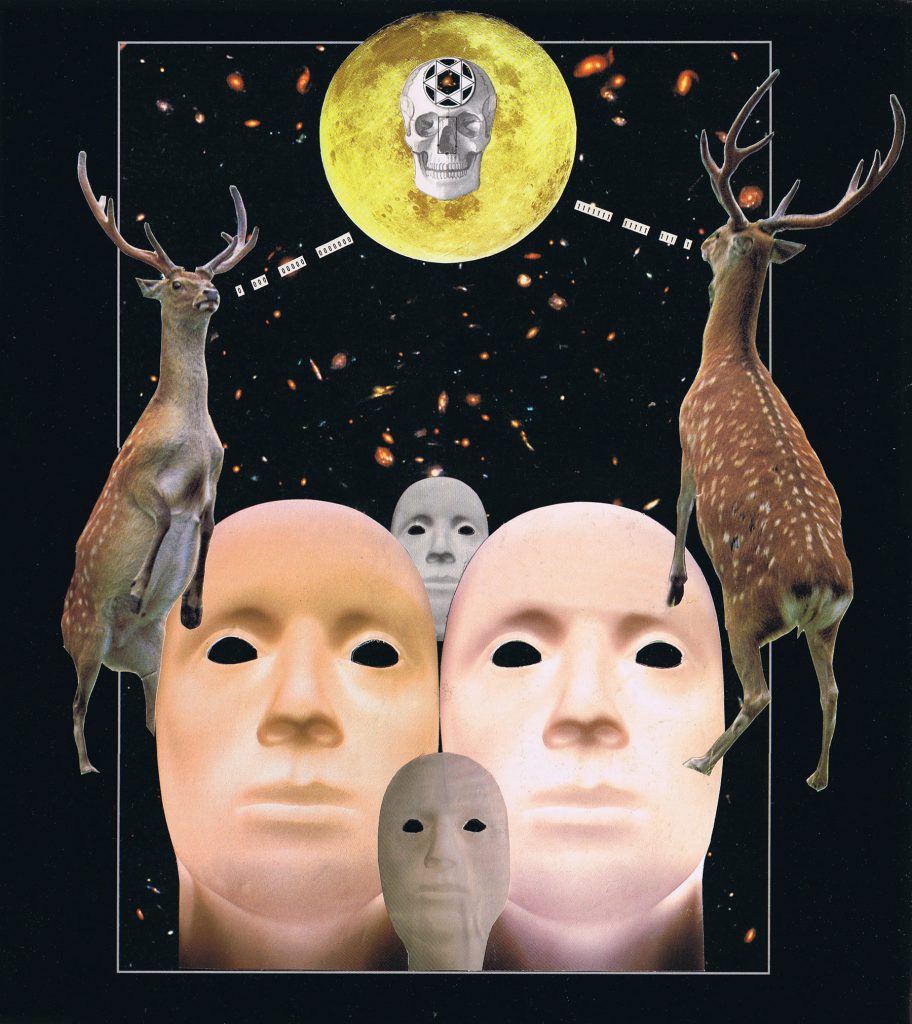
Mixed Input//Mixed Output: Interview Addendum
In addition to making collage and collage films, Schidlowsky is also actively involved in the experimental music scene and has made work in collaboration with a wide range of artists including Alexandre St-Onge, Will Eizlini, Fortner Anderson, Émilie Mouchous, Simon Brown, Mark Loeser, Ian Ferrier, Éric Gingras, Olivier Borzeix, and Magali Babin. The following is an addendum of “A Game of Skill or Chance?” published in kolaj Magazine. I have avoided the published questions in order to avoid redundancy.
I first met James in 2017 at Pleasure Dome’s Mixed Input Festival, a two-day festival in Toronto dedicated to audio-visual cross-pollination, although I had seen James perform multiple times in Montreal in the early 2000s. For Mixed Input, James created a DIY handmade electronic device called the HIL 0010001100101000, a Lunetta inspired experimental synth which creates sync audio-visuals. The performance consisted of two movements and the simple visuals created by the device were manipulated using physical means and captured for projection using a digital camera. Since that time, James and I have developed a friendship over a shared love of art, collage, imperfect photography, Tadanori Yokoo, Alexander Keewatin Dewdney, OBS, trash cinema and obscure Montreal history.
The expanded version interview was conducted over impromptu Glazed Lozenge Collage Collective (GLCC)2 meetings and collaboratively edited into its present form.

C: How did you begin making art?
JS: I used to say that music is the blood that flows in my veins. A life without music is no life. I grew up with classical, folk, old rock & roll, soundtracks from musicals, marching music, Eastern European music, etc. Around 1978, my uncle bought me an acoustic steel string guitar which I still play. In the late 90s, I was into Godspeed You! Black Emperor and related side-projects. When they’d play at the original Hotel2Tango loft or the Casa del popolo venues, they’d often have weirdos open for them – experimental music, free-jazz, noise, Alexandre St-Onge/Sam Shalabi duo, etc. I became interested in those sounds and began to make “experimental music” in 1998 under the moniker “skycrow” using borrowed equipment, a cheap electric guitar, radios found in the trash, cheap microphones, computer software and samples. One of the first tracks I made was for a compilation produced by and for people who followed a Sonic Youth mailing list / discussion group. Around 2000, I abandoned the pseudonym and began working under my own name. My first releases were put on CD-R by my faux label Muzik Aktiv and were available in limited editions.
In terms of making images, my father always had cameras around, and we would do the family slide show viewing thing. I also grew up with a collection of National Geographic magazines. For my first trip to Europe in 1987, my father had lent me his Konica rangefinder, giving me a photography basics lesson at the airport. I came back with some 300 photos. Amongst photos of every single castle along the Rhine boat trip there were a couple of abstract or creative shots. After the trip, I started to look at my hometown with different eyes. I borrowed my father’s old Minolta SLR and shot a couple of rolls, learning some photography basics.
Before my second trip to Europe in 1988, I dropped a wad of cash on a Pentax SLR with a 28-70 zoom lens. With each successive trip, I was taking more abstract photos or focussing on details rather than the usual tourist-type stuff. I shot what a friend of mine dubbed creative garbage: rust, decay, and industrial locations, but nature photography is equally important. In 2004, I bought my first digital camera, and it re-invigorated my photography.

CE: In 2012, you put out a VHS release of “Ringen” on squint fucker press. You claim it is “extremely rare field recordings of elven and faerie orchestras, heavy on strings and horns, as well as some pipe organ played by chthonic gnomes.” How did you actually make these psych-inducing sounds? How did you generate the moving images on the VHS?
JS: Using vacuum fluorescent displays (VFDs) from discarded VHS players and contact microphones, I made four units that sounded a bit like ring modulators. I recorded a 20-minute improvisation wherein I ran shortwave radio static through them. I’d vary the pitch of the beat frequency oscillator of the radio, tuning in and out of frequencies that excited the tiny wires in the VFDs (each one reacting to a different frequency). From the recording, I made three slowed-down copies so that I had the original, one at half speed, one at quarter speed and one at eighth speed (and consequently each a subsequently lower octave). I then made a mix/montage using the four tracks.
For the video, I used a simple technique that I had explored before, namely, feeding an audio signal into the composite video input of a CRT television. This resulted in a bunch of white horizontal lines that follow the different frequencies in the sound. I performed a six-hour version of it, filling an entire VHS cassette which has been exhibited on loop.
CE: Another aspect of your work involves re-purposing discarded material, a further extension of making creative garbage. For instance, the artwork for your VHS version of “Ringen” were photos of vacuum fluorescent displays salvaged from discarded VCRs. Furthermore, your piece The Sweet32 Speaker Interrupter-Switcher (Ceci n’est pas la haute-fidélité) (2012) uses 94 discarded speakers in an installation which exploits the unique timbre of each speaker. The title is due to the fact that only 32 of the speakers are wired, the remainder are simply decoration. Very Eyes, Very Eyes also transforms “trash” cinema into art. Do you see these works as form of aesthetic recycling?
JS: I find terms like “re-purposing” and “aesthetic recycling” droll. I am cheap. If one is cheap or one doesn’t have money, one re-uses stuff. Avoiding waste and being spendthrift was the way I was raised. They later called this recycling. For DIY electronics, old things found in the garbage are more interesting than modern technology and provide more salvageable components. It would have cost a fortune to buy a bunch of speakers. The speakers I used also varied in shape and design since they came from different devices. Some even have a bit of history behind them. For example, one of them I have had since the 70s when I’d hook it up to my Radio Shack 75-in-1 Electronic Kit.

As for video or collage, it’s easier to use existing images than create new ones. I can’t paint or draw, and I don’t think I could have imagined some of scenes I’ve collaged. The images themselves suggest things when put together. Then, only after, can one imagine what type of elements complement or complete the piece.
CE: One of your more famous artworks is the Vidiffektor, a lo-fi DIY video effects box that allows you to manipulate a video signal. The work was made famous by Canadian moving image superstar Christine Lucy Latimer, who used it in the production of The Magik Iffektor (2011) and The Pool (2011) and has been made into a PCB circuit board by Javier Plano (@Videonic) and Laboratorio de Juguete (Toy Laboratory) and by FluxMonkey.3 How did this device come about?
JS: A friend of mine came up with this circuit which involved manipulating multiple divisions of an audio signal. We tried it together, and I was not impressed with the results. He later wondered what would happen if we used a video signal, and we each explored that idea independently. I thought it was interesting, and developed it a bit further, optimizing some of the controls. It was a simple enough circuit, so when I decided to put it into a box, I made a second one for Christine. My boxes are all one-offs, except for this exception.
Eventually, I shared the circuit online and over the years, people have built it and used it in workshops. Due to the complex nature of video signals, video-manipulation circuits are generally much more complex than audio circuits, but this circuit is quite simple and thus limited. Still, it produces fun results.
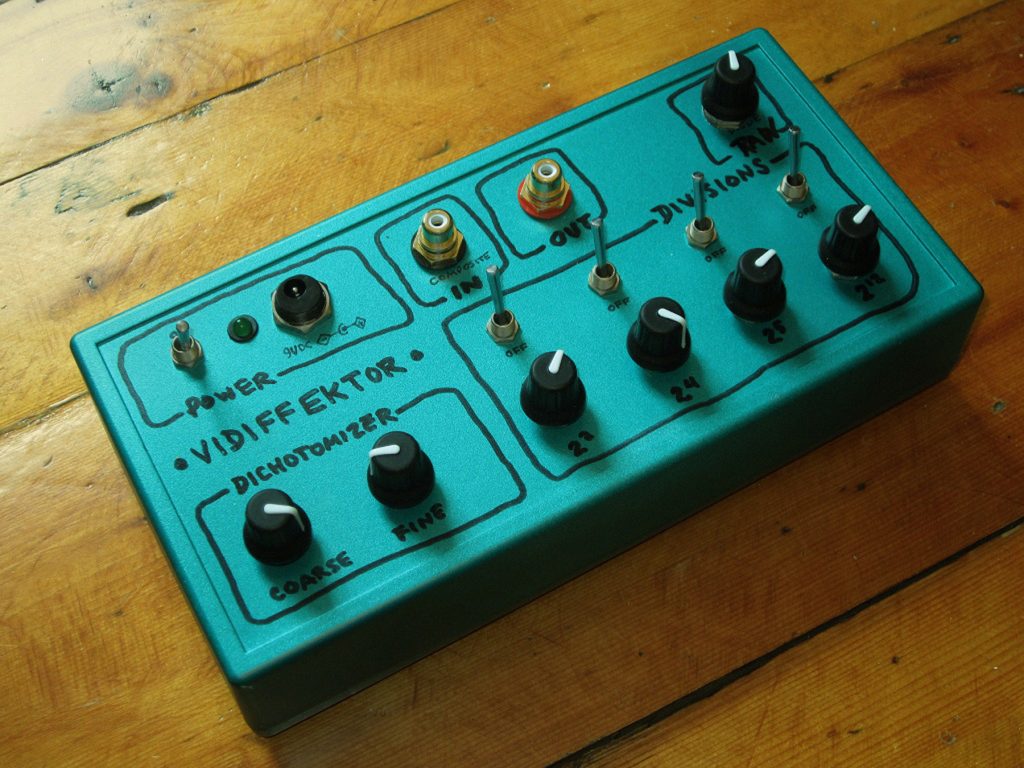
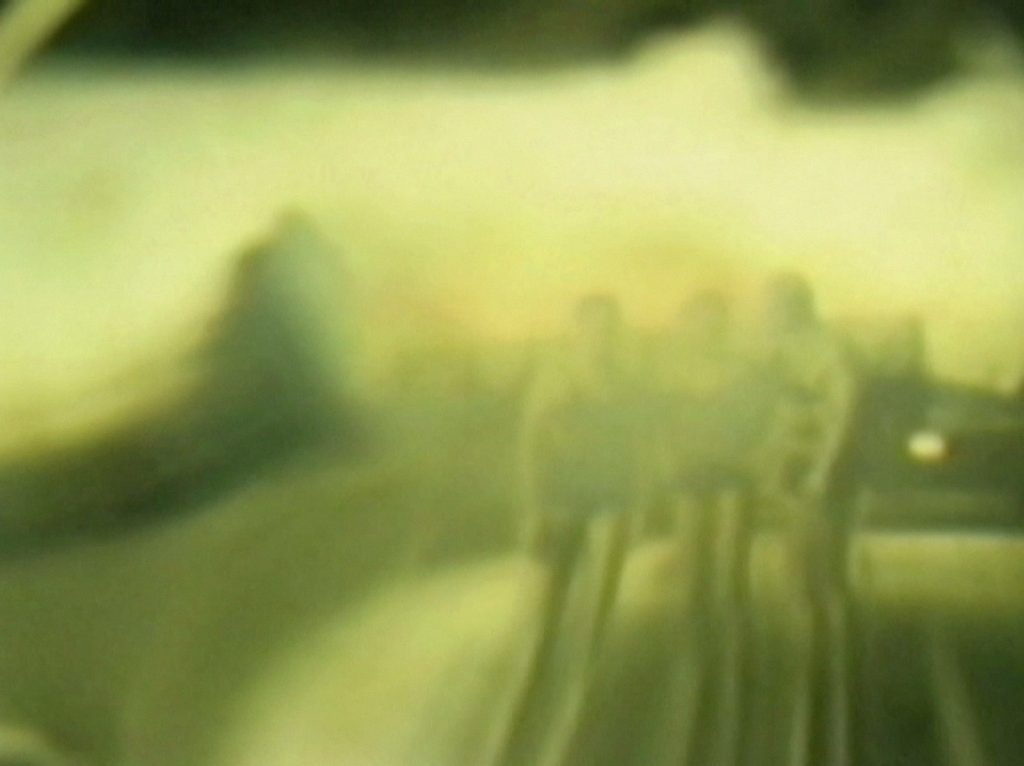
CE: You not only see the output of the device as art, but also the way it is constructed and housed?
JS: Some people strive to make things that look like they came out of a factory, but I am inspired by those DIYers who make unique things, putting circuits into toys, dolls, etc., which is imaginative (and often quite amusing). Admittedly, for practical reasons, a lot of my circuits ended up in simple boxes, although they do have a certain style. I once went to a lot of trouble to put a practical infinity mirror into my Pulse Witch 23 box, wherein the LEDs within it reflected the state of the various parameters/knob-settings. I have also used garage sale finds, like with the PharaohDrone which is a modified version of the XOR Stereo Droner by the amazing PHOBoS encased in a tiny metal Pharaoh’s tomb with flashing eyes.
CE: Given that you have a fairly specialized skill set and that you predominately make art for fun, can you talk about some of your collaborations? Do you mainly work with friends?
JS: With music, it’s pretty natural – musical friends hanging out and jamming or a friend composing an ensemble piece who wants certain sounds that I can produce. For Le Black Noise, Olivier Borzeix and I came up with the concept in a car on our way to FIMAV [Festival International de Musique Actuelle de Victoriaville]. We were discussing the different colours of noise – white, pink and brown – and jokingly wondered what black noise would sound like. We decided that it would be opposite of white noise … no frequencies, in a controlled manner, rather than all the frequencies randomly. We decided to implement this using no-input methods. I had the “analog” side, using a couple of mixers and some effects, whereas Olivier used a computer and we looped the output between us. These sonic adventures were very unpredictable, and we never quite knew where they would bring us. I also formed Heavy Eye of the Sun with Olivier where we abandoned the electronics for purely acoustic.
I have also played a lot with Will Eizlini in various configurations and with Alexandre St-Onge. Aside from being in some ensembles together, I was also in a couple of incarnations of ExperimentallicA, a collective whose core members consisted of Alexandre and Simon Brown. The two of them collaborate on experimental writing projects, and have used one of the tools I had developed with poet Fortner Anderson, as well as a program I had put together based on some of my neural network experiments, which I eventually adapted for them.
CE: How did your collaboration with Anderson come about?
JS: I knew him from McGill University’s radio station, CKUT FM, where we both have hosted shows. Knowing I was a computer programmer, he approached me with the idea of developing text-generation/writing tools around 2018. We worked on a few different things which eventually lead to us collaborating on Le poème perpétuel (2018), an exhaustive list of 10 billion unique 10-word poems. The project was Fortner’s idea, I just implemented it. It has been presented as a live performance/reading and has been exhibited at Centre Clark. Fortner is always pushing the boundary of spoken word.
The piece can now be accessed through Fortner’s website. It was inspired by Raymond Queneau and Brion Gysin’s permutation poetry.4 In fact, I had put together a version of Kick That Habit Man (1973) using Gysin’s own voice as a proof of concept.
CE: What are you currently working on?
JS: I am always working on a huge pile of projects, but whether I finish them or not is another matter. There is a collaboration with Will, Alexandre and Xarah Dion called WAJX which will be appearing on NoType in the near future. Currently, I am working on still and moving collages; however, I have recently started exploring the electronics of neon lighting. I am not one to actively self promote, but everything, except the mushrooms I forage, is available online in some form or another.5
- Since this interview was conducted, Schidlowsky has returned to working on this supercut. He now considers the project ongoing and it is just over 16 hours in length (and growing). [↩]
- Members include James Schidlowsky, Kathryn Michalski, and Clint Enns. [↩]
- To build your own:
https://github.com/labodejuguete/VIDIFFEKTOR
http://www.fluxmonkey.com/video/videffektor.htm [↩] - Anderson in an e-mail correspondence with Schidlowsky from March 14, 2018: “I woke up this morning with the thought we should try an experiment à la Queneau. I’ll write up a text and in it define a set of alternate words, phrases, and sentences, that the machine can then mix and match. The thought would be to create a sufficient number of possibilities that it would, like Queneau’s piece [Cent mille milliards de poèmes (1961)], be beyond the capacity of a lifetime to read them all.” [↩]
- For more check out:
James Schidlowsky’s Home Page, Flickr, Vimeo, and Instagram. [↩]